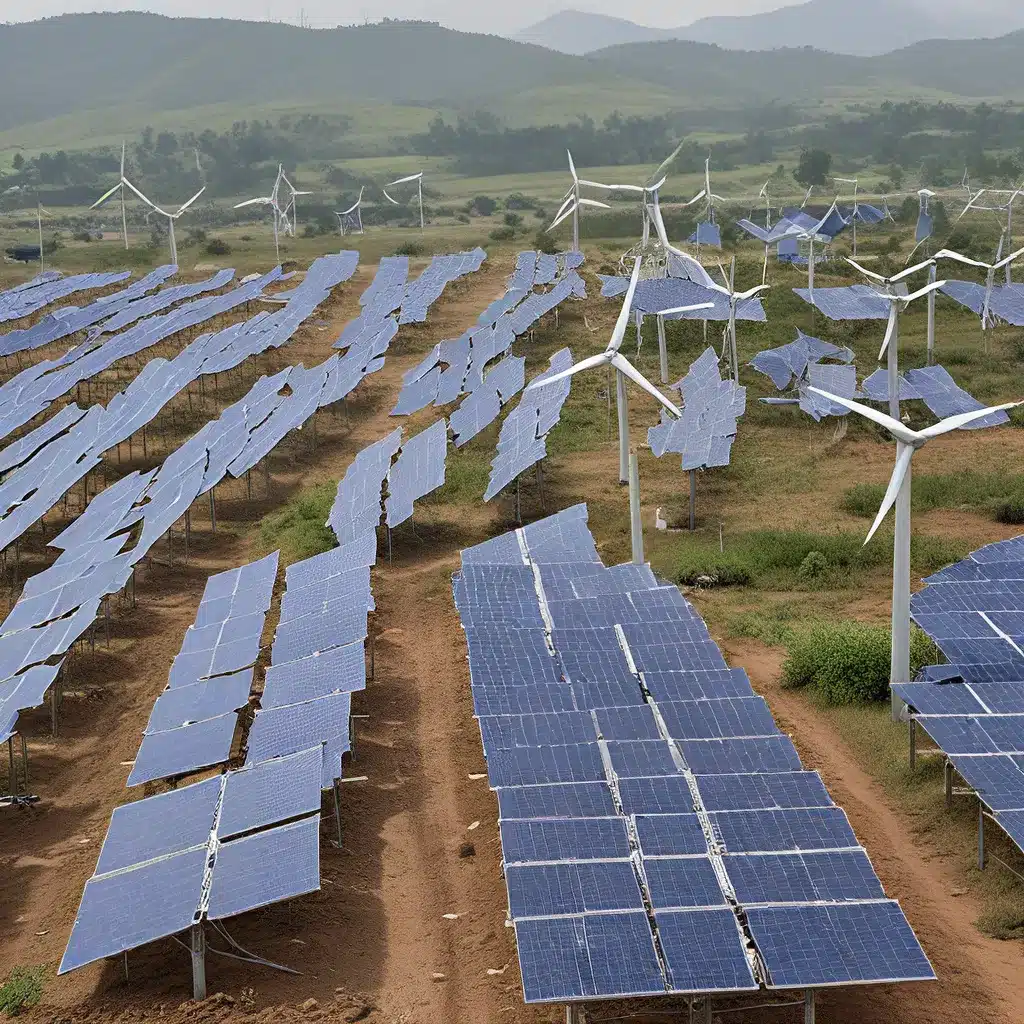
As the world becomes increasingly volatile, with natural disasters striking with alarming frequency and intensity, the need for disaster-resilient infrastructure has never been more apparent. But what if I told you that the solution to this pressing issue lies in the very power of the sun? That’s right, solar energy holds the key to unlocking a new era of resilience and self-sufficiency in the face of calamity.
Harnessing the Sun’s Might
I’ve always been fascinated by the idea of harnessing the sun’s limitless energy, but it wasn’t until I delved deeper into the world of renewable energy and disaster resilience that I truly understood its transformative potential. Picture this: a community battered by a devastating hurricane, its power grid crippled and residents left in the dark. But thanks to a solar-powered microgrid integrated into the disaster-resilient infrastructure, the lights stay on, critical services continue to function, and the community is able to weather the storm.
This is more than just a hypothetical scenario – it’s a reality that’s unfolding in disaster-prone regions across the globe. By integrating solar energy systems into the very fabric of our infrastructure, we can reduce our dependence on traditional power sources, which are often vulnerable to disruption during natural disasters. And the best part? This approach doesn’t just provide a reliable source of energy – it also offers the potential for cost savings and even revenue generation.
A Resilient and Sustainable Future
As I delved deeper into the advancements in solar energy technology, I was amazed by the strides that have been made in recent years. From the development of high-efficiency solar panels to the integration of advanced energy storage systems, the field of renewable energy has undergone a remarkable transformation. These innovations have made solar power more reliable, efficient, and cost-effective than ever before, paving the way for its widespread adoption in disaster-resilient infrastructure.
But the benefits of this approach extend far beyond just energy reliability. By incorporating solar energy into our critical infrastructure, we can also reduce our carbon footprint and contribute to a more sustainable future. This aligns perfectly with the growing global emphasis on environmental preservation and climate change mitigation – a cause that’s close to my heart.
Navigating the Challenges
Of course, the journey towards a solar-powered, disaster-resilient future is not without its challenges. As I learned, the integration of solar energy systems with existing electrical grids can be a complex and often-times daunting task. Navigating grid integration and interconnection issues requires a deep understanding of technical considerations and regulatory frameworks.
And then there are the financial barriers to overcome. The upfront costs associated with solar energy installation can be a significant hurdle, especially for cash-strapped communities or organizations. However, as I discovered, the long-term cost savings and revenue potential often outweigh the initial investment, making solar energy a financially viable solution in the long run.
Lessons from the Frontlines
As I delved deeper into the topic, I was fortunate to come across several case studies and real-world examples of solar energy being integrated into disaster-resilient infrastructure. These stories not only highlighted the practical applications of this approach but also provided valuable lessons and best practices for others to follow.
One particularly inspiring example was the implementation of a solar-powered microgrid in a disaster-prone area. The project not only enhanced the community’s energy resilience but also reduced their reliance on external power sources, ensuring that critical facilities and services remained operational even during the most challenging of times.
The Future is Bright
As I contemplated the future of solar energy in disaster-resilient infrastructure, I couldn’t help but feel a sense of excitement and optimism. With ongoing research and development focused on improving efficiency, reliability, and cost-effectiveness, the potential for this technology is truly limitless.
Advancements in energy storage systems, such as advanced batteries and hydrogen fuel cells, are poised to address the intermittency of solar power, ensuring a continuous supply of energy even during prolonged disaster situations. And the integration of emerging technologies like artificial intelligence and blockchain could further enhance the smart grid capabilities of these systems, making them even more resilient and responsive.
Embracing the Future, Together
So, what’s the takeaway from all of this? Well, it’s simple: the future of renewable energy and disaster resilience is brighter than ever before. By embracing the power of the sun and integrating solar energy into our critical infrastructure, we can create a more sustainable, self-sufficient, and resilient world – one that’s better equipped to withstand the challenges of the future.
And as for me, I’m eager to do my part. That’s why I’m proud to partner with Firewinder, a company on the forefront of renewable energy solutions. Together, I believe we can help communities around the world power through the challenges and build a future that’s truly built to last.
Are you ready to join me on this exciting journey? Let’s harness the sun’s power and create a more resilient tomorrow, one solar panel at a time.

